Worksheet Solutions: Our School-A Happy Place | Our Wondrous World Class 5 - New NCERT PDF Download
Q1: Choose the correct option for each question.
(i) What is a green school focused on?
A) Managing waste and saving water
B) Increasing class sizes
C) Reducing playtime
D) Ignoring environmental issues
Ans: A) Managing waste and saving water
(ii) Which of the following is NOT a part of the Swachh Bharat Mission?
A) Clean toilets
B) Safe water
C) Reducing school hours
D) Hygiene education
Ans: C) Reducing school hours
(iii) Which group is responsible for observing electricity usage?
A) Water Watchers
B) Electricity Savers
C) Waste Warriors
D) Traffic Trackers
Ans: B) Electricity Savers
(iv) What does the term "wet waste" refer to?
A) Plastic waste
B) Food scraps
C) Paper waste
D) Metal waste
Ans: B) Food scraps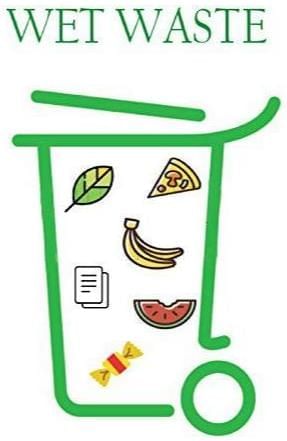 Green Bin for Wet Waste
Green Bin for Wet Waste
(v) Who takes care of the trees in the school?
A) Only teachers
B) Only students
C) Students and staff
D) No one cares for them
Ans: C) Students and staff
Q2: Fill in the blanks with the correct words from the chapter.
(i) A green school teaches students to care for _______.
(ii) The Swachh Bharat Mission focuses on clean _______.
(iii) Jadav Payeng is known for planting a _______ in Assam.
(iv) Water Watchers check for _______ taps in the school.
(v) The campaign Jal Shakti Abhiyan encourages _______ water.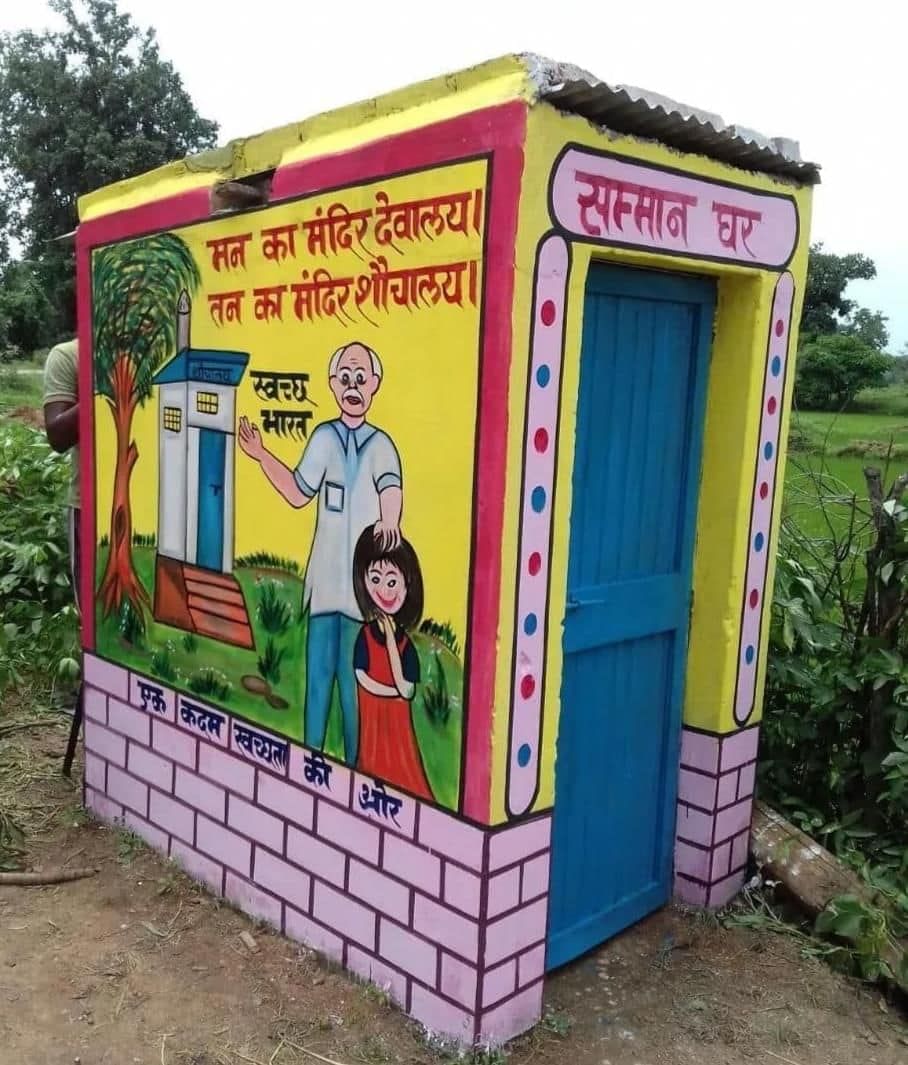 Swachh Bharat painting on public toilet wall Ans:
Swachh Bharat painting on public toilet wall Ans:
(i) A green school teaches students to care for plants.
(ii) The Swachh Bharat Mission focuses on clean toilets.
(iii) Jadav Payeng is known for planting a forest in Assam.
(iv) Water Watchers check for leaking taps in the school.
(v) The campaign Jal Shakti Abhiyan encourages conserving water.
Q3: State whether the following statements are True or False. Correct the false statements.
(i) Mawlynnong is known as Asia’s Cleanest Village.
Ans: True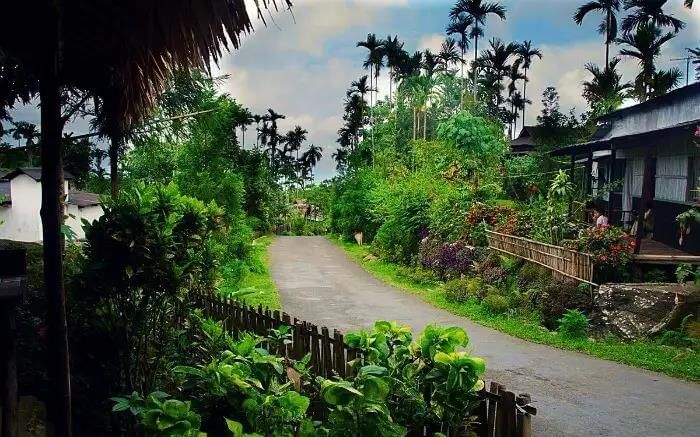 Mawlynnong Village (Meghalaya)
Mawlynnong Village (Meghalaya)
(ii) Every child has the right to study in a clean environment.
Ans: True
(iii) Trees do not provide shade.
Ans: False
(iv) Plastic waste is considered dry waste.
Ans: True
(v) The teacher's name in the text is Anupam.
Ans: True
Q4: Match the items in Column A with the correct descriptions in Column B.

Ans: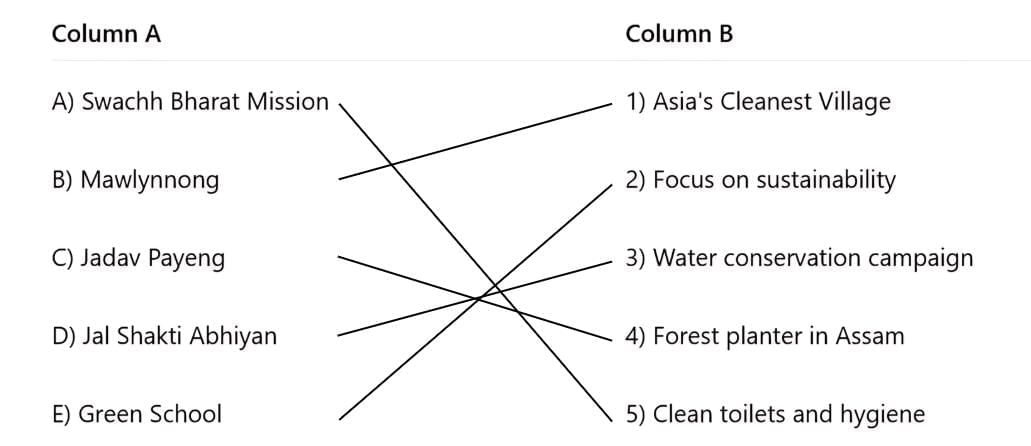
Q5: Answer the following questions in 2-3 sentences each.
(i) What is a green school?
Ans: A green school is a place where we take care of nature. We save water, use electricity wisely, and plant trees. Everyone works together to keep the school clean and happy.
(ii) Why is it important to save water?
Ans: Saving water is important because it helps us have enough clean water for everyone. Even small leaks can waste a lot of water over time, so fixing them is a good idea!
(iii) What can students do to help keep the school clean?
Ans: Students can help keep the school clean by not littering, using dustbins properly, and picking up trash when they see it. They can also help plant trees and care for plants.
(iv) What are some signs of a good school environment?
Ans: A good school environment has clean classrooms, healthy plants, and happy students. It is safe, and everyone helps each other to be kind and respectful.
(v) How can we learn about traffic safety?
Ans: We can learn about traffic safety by following rules, listening to teachers, and looking at signs. It is important to pay attention when we are near roads to keep everyone safe.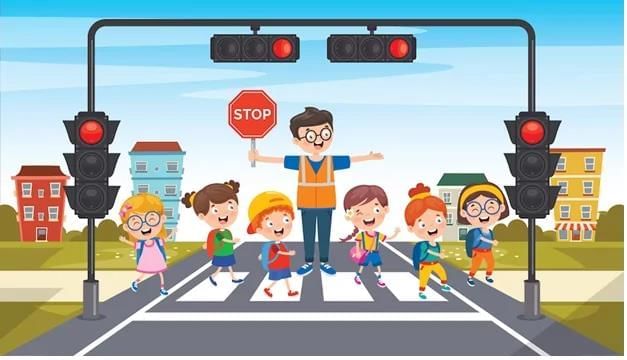 Students safely crossing Road
Students safely crossing Road
Q6: Answer the following questions in 4-6 sentences each. Use examples from the chapter to support your answers.
(i) How can students form School Explorer Teams to improve their school?
Ans: Students can create five teams:
- Electricity Savers (check lights/fans usage)
- Water Watchers (find leaks, wastage)
- Waste Warriors (observe litter, dustbins)
- Green Guardians (count trees, find planting spots)
- Traffic Trackers (watch school gate safety).
Each team explores their area and discusses findings with the class. This helps identify problems and makes students active participants in improving their school environment.
(ii) Why is proper waste management important, and how should students practice it?
Ans: Proper waste management keeps schools clean, prevents diseases, and helps the environment. Students should reduce waste by using only what's needed and reusing items.
They must segregate waste properly -
- Blue bin for dry waste (plastic, paper)
- Green bin for wet waste (food scraps)
Separate collection for recyclables like newspapers. This makes sanitation workers' jobs easier and safer.
(iii) What are the main safety measures students should know for fire and traffic emergencies?
Ans: For fire safety, students should move calmly to exits, crawl low under smoke, never hide in closets, and gather at assembly points. For traffic safety, they should learn basic rules, use pedestrian crossings, and help create signboards for school gates. Both situations require staying calm, following rules, and helping others when safe to do so.
(iv) How can schools effectively conserve water and electricity?
Ans: Schools can save water by fixing leaking taps, closing taps properly, and collecting rainwater for gardening. For electricity, students should switch off lights/fans when leaving rooms, use natural sunlight, and paint roofs white to reflect heat. Simple daily habits like these make a big difference in conservation. Activities like measuring dripping water help students understand wastage better.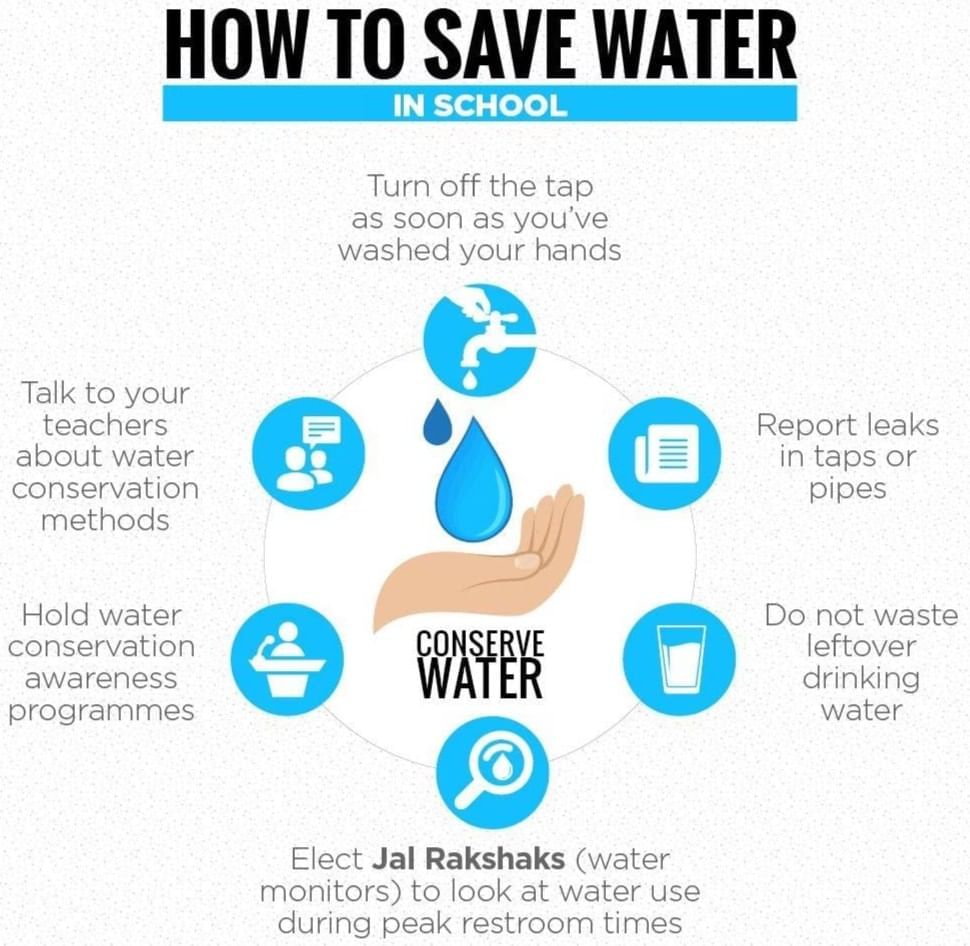 Mission Paani by Govt.
Mission Paani by Govt.
|
11 videos|211 docs|10 tests
|
FAQs on Worksheet Solutions: Our School-A Happy Place - Our Wondrous World Class 5 - New NCERT
| 1. What are the main characteristics that make our school a happy place? |  |
| 2. How can students contribute to making their school a happier place? |  |
| 3. Why is it important for schools to be happy places for students? |  |
| 4. What role do teachers play in creating a happy school environment? |  |
| 5. How can parents support their children's happiness in school? |  |





















